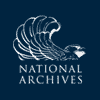Alexander Hamilton to Richard Harison, 7 March [1792]
To Richard Harison1
[Philadelphia] March 7. [1792]
My Dear Sir
This will be delivered to you by Mr. Ceracchi,2 whom I recommend to your attention.
He goes to New York in pursuit of subscriptions towards a Monument of the American Revolution.3 You have doubtless heared of the Artist and his project. He will explain to you more particularly.
I have prepared him to find difficulties in the present political situation of New York.4 How far they may really stand in his way he will better ascertain on the spot.
While I warmly wish success to the plan I would not embarrass my friends by urging it to the prejudice of public objects.
Yrs. sincerely
A Hamilton
R Harrison Esqr
ALS, New York Society Library, New York City.
1. Harison was United States attorney for the District of New York.
2. On October 31, 1791, a memorial of Giuseppe Ceracchi, a Roman sculptor, was presented to the House of Representatives (George Washington Papers, Library of Congress). In this memorial Ceracchi offered “to execute, on a certain design, and on certain terms, a monument to perpetuate American liberty and independence” (, 444). On the same day a similar memorial was presented in the Senate (, 20).
On December 6, 1791, the House proposed a joint committee with the Senate to consider means of carrying out the resolutions of the Continental Congress of August 7, 1783, which concerned a monument to commemorate the American Revolution including an equestrian statue of George Washington (, 468). Although the message from the House of Representatives of December 6 is printed in the Senate Journal, no evidence has been found that the Senate acted on this proposal (Journal of the Senate of the United States of America, Being the First Session of the Second Congress, Begun and Held at the City of Philadelphia, October 24th, 1791; and in the Sixteenth Year of the Sovereignty of the Said United States [Philadelphia: Printed by John Fenno, No. 69, High Street, 1791], 46).
On March 31, 1792, after seeing Ceracchi’s model for the monument, John Jay wrote to Egbert Benson, praising Ceracchi’s design and suggesting that payments might be deferred and that ways and means of payment be referred to H (ADfS, Columbia University Libraries). Benson was a member of the committee appointed by the House on April 11, 1792, to consider Ceracchi’s memorial of October 31, 1791 (, 574). After deliberating for a week, the committee reported in favor of implementing the resolutions of the Continental Congress of August 7, 1783, and of appointing the secretaries of State, Treasury, and War as commissioners for that purpose. The report further proposed that Congress at the next session should provide for payments in unspecified amounts for a term not exceeding ten years ([Philadelphia] Gazette of the United States, April 25, 1792). On May 7, 1792, the report was recommitted, and in view of a second memorial of Ceracchi which stated the terms upon which he would begin work on the monument (Journal of the Senate, 2nd Cong., 1st sess., 176), the committee reported on the same day that “at the present time, it might not be expedient to go into the expenses which the Monument … would require, especially with the additional ornaments proposed by the artist” (, 602).
3. In his letter of March 31, 1792, to Benson, Jay had supported the idea of soliciting subscriptions from individuals or from states to defray the expense of Cerrachi’s monument. Although further attempts were made to raise the money needed and some subscriptions were taken in 1795, the monument was never built (, XXXIV, 136–39).
4. For some contemporary views on the political situation in New York, see Isaac Ledyard to H, February 1, 28, 1792; Philip Schuyler to H, January 29, 1792; H to William Seton, January 18, 1792; James Tillary to H, March 6, 1792.

![University of Virginia Press [link will open in a new window] University of Virginia Press](/lib/media/rotunda-white-on-blue.png)
